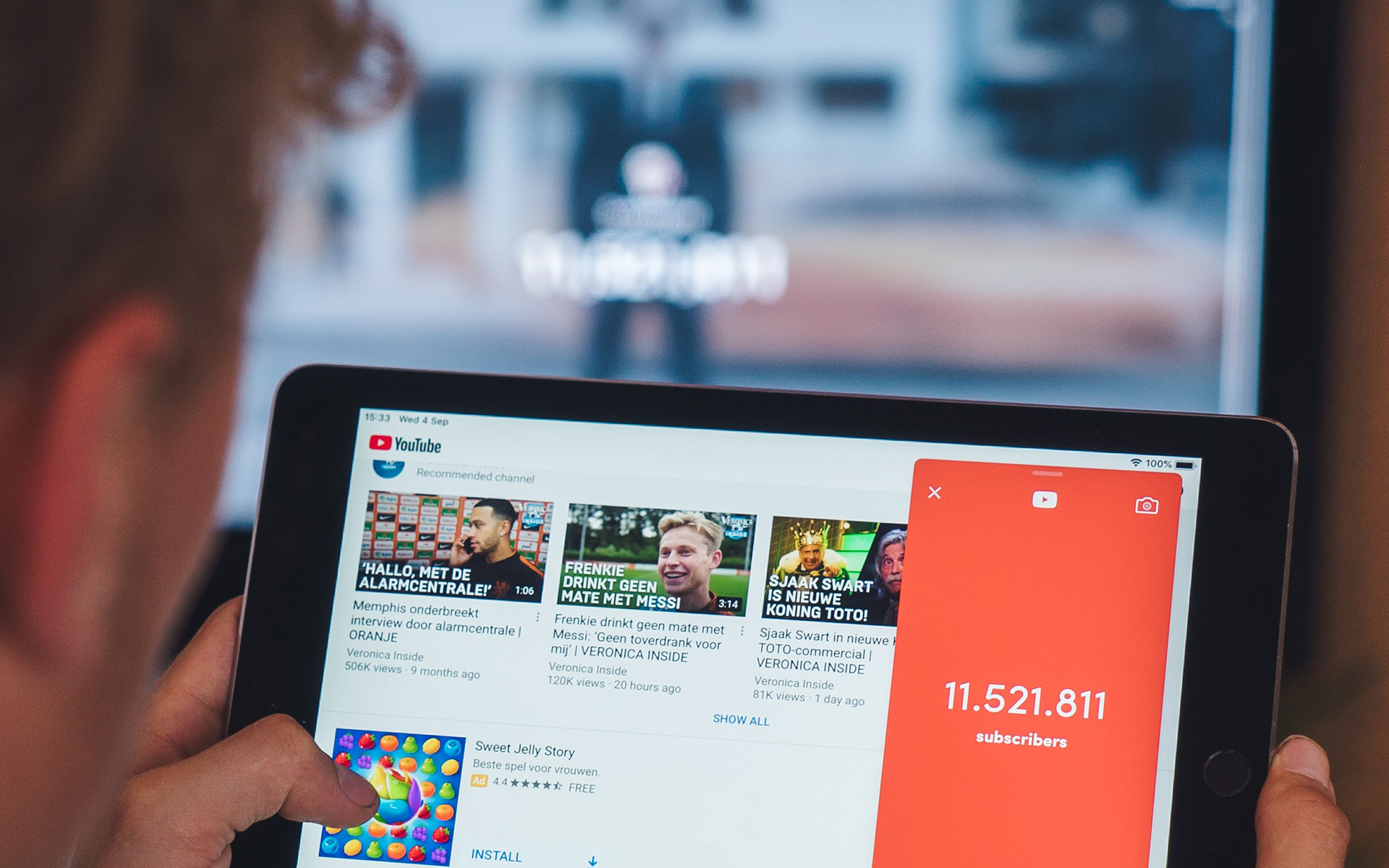In this blog post we discuss why measuring organic uplift is a critical component in understanding the true performance of creator marketing. We also provide some examples of how you can estimate the organic uplift of creator campaigns.
Note: This post was originally published on the Matchmade blog on Dec 10, 2019. We’ve updated it in December 2022 with more up-to-date data and advice.
Introduction
Tetris – by far the best-selling game of all time – was released on 6 June 1984, just over 38 years ago. To simply say that video games, and the video game industry itself, have changed since then would be a serious understatement. In fact, it has been said that Tetris would actually fail as a premium mobile game in today’s market.
Aside from games themselves changing, there are also simply more of them. In September of 2009, there were 52,000 games on the US App Store. As of October 2022, the Apple App Store now has more than 1 million games (and 3.8 million other apps) – that’s almost a 20X increase!
A massive increase in the supply of games is making it harder and harder for companies to get the market to notice and buy their games.
This means video game marketers need to have a comprehensive understanding about how their campaigns perform and how good they are at driving installs and revenue.
There are various measurement techniques which enable marketers to generate a picture of performance. However, some of them are often overlooked or misunderstood, perhaps none more so than organic uplift.
Let’s take a look at what organic uplift really is, and why you should be using it.
“On average, only 20% of people who are going to take an action will click on a link.”
What Is Organic Uplift?
On a technical level, organic uplift represents the unattributed growth in organic installs. It can come as the result of store featuring, increased word of mouth, heightened brand awareness, untracked marketing, or players simply seeing an ad online, not interacting with it, then searching for the product by themselves (Kramarzewski and De Nucci, 2018).
On a more down-to-earth level, organic uplift tells you how many conversions that are not directly attributable to certain campaigns are actually generated by those campaigns.
For example, if the organic uplift of creator marketing campaigns is 200%, it means that for every conversion directly attributable to those creator campaigns, an average of 2 additional conversions will show up in organic (or direct) traffic.
If, for example, you prompt someone to click on a link below a YouTube video, and that person doesn’t do that, but instead goes either straight to your website, or through Google, or goes directly to your App Store page, this constitutes organic uplift.
Taking organic uplift into account is a must for brands looking to have a realistic understanding of the performance of influencer marketing. The same applies to any other (usually video-based) advertising medium where clicking a link in an ad is not the most natural behavior the user would take.
In fact, on average only 20% of people who are going to take an action based on video content will click on a link. The rest will do it organically, either by going directly to a website, or directly to the app store to search.
If this doesn’t sound believable to you, compare it to an entirely offline advertising medium like linear television. In TV campaigns, there are no links to click, yet they can provide extremely good performance and a massive uplift in organic and direct traffic.
Taking organic uplift into account is a must for brands that want a realistic picture of influencer marketing performance.
How Does Organic Uplift Work?
Organic uplift measures organic traffic, measures user behaviour during campaigns, and then compares those measurements to generate insights. When used in the right way, it can increase the effectiveness of campaigns through a more realistic analysis.
If someone downloads an app in the Google Play store based on an organic search, that can improve the ranking of that app in the Google Play store. Over time, if the app’s organic searches go up, so does the visibility of the app. This can in turn lead to a higher install rate. With a higher organic install rate, the cost per install (CPI) rate falls for the advertiser.
Here is a simple YouTube-based example of what causes organic uplift:
- The majority of people watch YouTube on a mobile device (or cast from a mobile device to a TV).
- When you watch a YouTube video on mobile, you don’t see links underneath a video like you would on a computer.
- On a computer, you don’t have to take any extra steps. With the mobile app, you need to expand the video description to see the links. That small extra step is one of the reasons why people, in practice, don’t click on the links on mobile as much and rather convert organically.
- Alternatively, someone could be watching a video on their computer but then performs a search on their mobile device. In this way, the person converts because of the content, but the traffic shows up as direct or organic in analytics.
How Do You Measure Organic Uplift?
The underuse of organic uplift could partly be attributed to how difficult it is to measure. As with every marketing tool, there are many factors at play, one of the most important of which is the base level of activity in any given marketing channel.
For example, if you’re a big company that gets around 100,000 downloads a day, and you post a video, and you spend €5000 on it, you’re probably never going to be able to measure your organic uplift, because your marketing channel is going to be way too noisy.
On a technical level, the general formula used to calculate organic uplift is:
Organic installs = baseline + organic uplift × measured installs
The different components of this formula are the following.
- Baseline: the average organic conversions you’d get in a given time period if creator campaigns weren’t running.
- Measured installs: Directly measured installs generated by the marketing campaign
- Organic uplift: The multiplier of how many organic conversions every measured install generates on average.
The formula can then be rearranged as follows:
Organic uplift = (total installs – organic baseline – measured installs) ÷ measured installs
= (organic installs – baseline) ÷ measured installs
Here is a simple example of how it can work in practice. Let’s say your baseline organic installs during a given period are around 700 when no creator campaigns are running. You then run creator campaigns in two separate periods and get the following results:
Here is how to interpret the results:
- With the above numbers, for every install measured for the creator marketing campaign, approximately 0.93 additional installs are generated as organic uplift.
- In practical terms, if your creator campaign generates 100 directly attributable installs, an additional 93 installs would be generated by it in reality, but the conversions would show up in other traffic sources in your analytics.
- Of course, this is just a simple example and the multiplier might not always be the same. As you gather more data points from running several creator campaigns, you should set an average based on the results and update it every once in a while.
- The same applies for the organic baseline: as your app or product grows (or drops) in popularity, the baseline might shift up or down.
There are software solutions that can help you establish the baseline organic conversions and even generate organic uplift estimates for you.
If you do not have sophisticated attribution available, there are also other creative ways to estimate organic uplift.
Run campaigns in a market with almost no organic traffic
Choose a market where you are getting close to zero organic conversions. Then run a campaign with creators who reach that market. After the campaign goes live, look at how organic conversion develop in this market. This can tell you how much organic uplift creator campaigns can generate.
However, keep in mind that if your brand is very well known in some markets, the effect might be less pronounced.
Leverage brand keyword ad impressions
Another method is to measure brand keyword ad impressions. Target your brand keywords with search ads, and see how many daily impressions are generated on average. Then, run an influencer campaign. See how much brand keyword searches increase in the hours and days following the publishing of creator content.
If there is a clear uptick, you can then use this number as a basis for organic uplift estimates.
Use direct traffic as a proxy
Direct traffic can also be used as a proxy for organic uplift. If someone types your website’s address directly into their browser, they show up as direct traffic. Ask yourself, at the time of a creator’s video getting published, is there a spike?
- You can do an even deeper dive into the data when combined with an influencer’s audience data.
- From that audience, you can see for example how many people are from Germany, female, and watching on Android.
- Look at the audience data of your website at the time of the spike. Can you can visitors that match these characteristics. This would indicate that the spike can be attributed to your influencer campaign.
Why Should You Be Measuring Organic Uplift?
Organic uplift isn’t “one simple trick” that subverts the normal way in which marketing works. On the contrary, it is a tool that should be baked into the marketing process. It isn’t a way to obtain perfect information – but it is a way to obtain the clearest picture possible.
Essentially, measuring organic uplift can lead to seeing the true ROI of a creator marketing campaign. It allows marketers to more accurately measure campaigns and see how users respond to creator sponsorships. This, in turn, allows them to make better plans for future campaigns and see how much efforts can be scaled.
Organic uplift measurement can also make it easier to prove that influencer marketing really works – and not just in terms of generating brand awareness. If people take the time to measure organic uplift and to understand it, they can then go to their managers and have a better case for asking for more budget.
Marketers should maximise organic traffic because it can lead to consistent increases in traffic over time. Using creators to boost organic traffic is therefore simply a good long-term strategy.
In conclusion
To truly understand the performance of creator marketing, you need to measure the organic uplift of creator campaigns.
Because of the way people interact with creator content, not taking organic effects into account is a mistake. Not accounting for it will invariably make creator marketing look way worse in terms of performance compared to other marketing channels and mediums – when it might in fact be providing you with massive amounts of new, valuable users.
If you do not have a model for estimating organic uplift yet, we strongly recommend you get started. If you are unsure how to go about it, we’d be happy to help. Just in get in touch with our team and let’s talk!
Sources:
Kramarzewski, A. and De Nucci, E. (2018). Practical game design. Birmingham, UK: Packt Publishing, page 380




